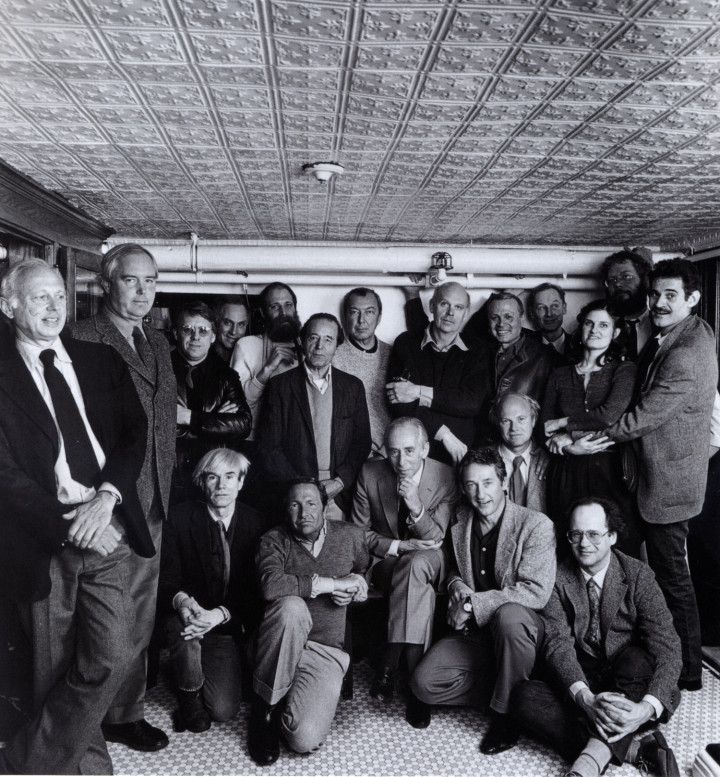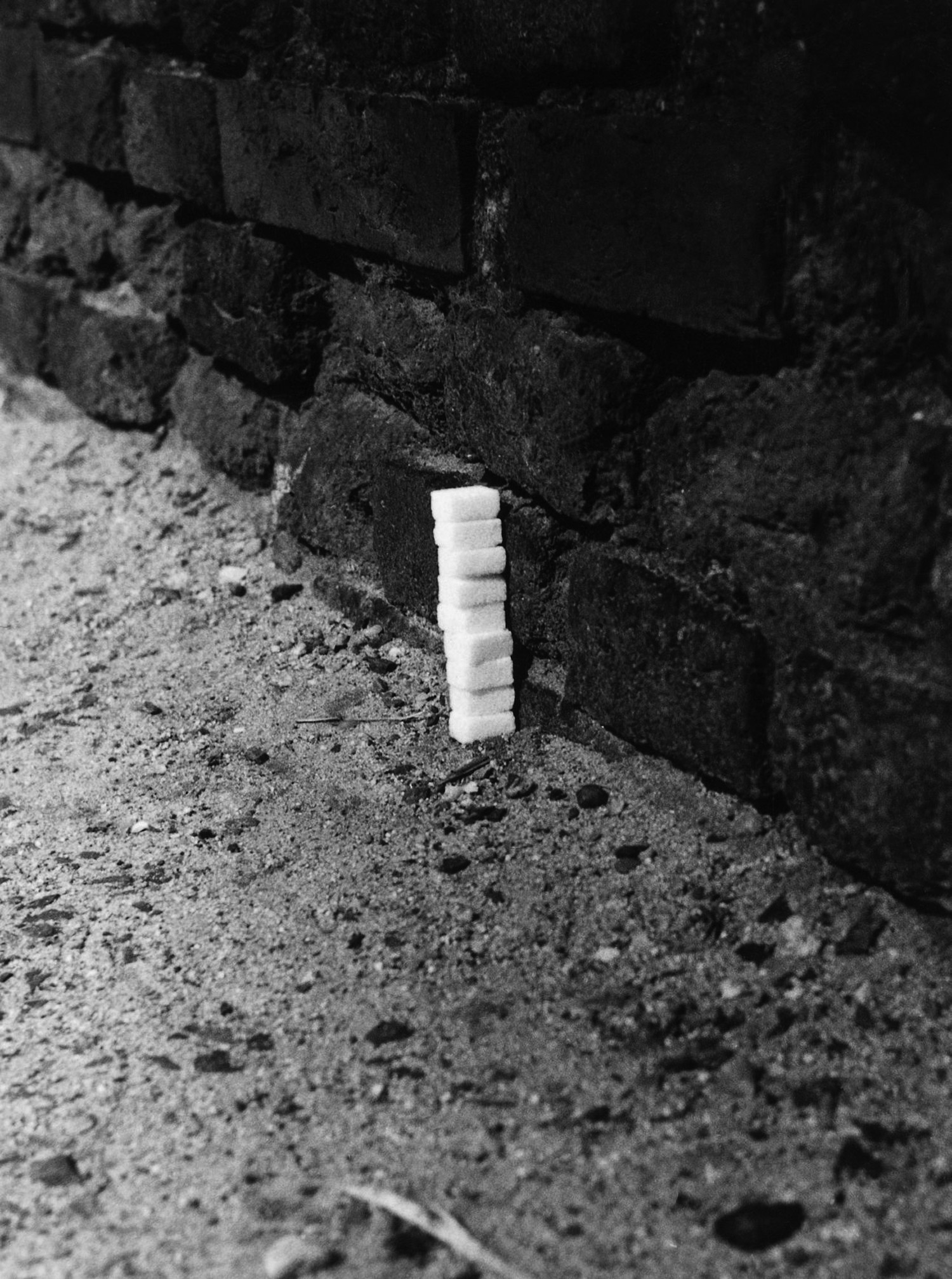
The following text by the art dealer, art advisor, writer and curator Jeffrey Deitch originally appeared in Flash Art No. 104 (October – November 1981).
Who decides which artists get shown, which critic gets printed, and which dealers get rich? Who decides which art world figures will attain world-class stature, joining the ranks of those who have a shot at eventually entering art history? For the vast majority of artists and others who hope to be able to contribute to, or take from the art historical continuum, the ‘system’ will forever remain a mystery. From certain quarters, the tastemakers are viewed as an impenetrable pantheon. And an ever-widening circle of bitter outcasts sees these tastemakers, whoever they are, as a corrupt cabal that responds not to quality, but to money.
The answer to the question of who forms the consensus, and who separates the ‘ins’ from the ‘outs’ is not easily determined. Excellent cases can be made for the existence of all sorts of power schemes. I recently debated with an art critic who was convinced that dealers have all the power, and proceeded to cite example after example of how dealers were supposedly manipulating curators, collectors and art magazines. A few days later, a young dealer, browbeaten by demanding and hard-bargaining clients, gave me an impassioned lecture about how collectors now hold all the cards.
Ask many artists “who has the power?” and you are likely to unleash the most outrageous of conspiracy theories. Some insist that it is a combine of corporate executives, linked by interlocking directorships and museum trusteeships. The advocates of this particular view are likely to see this art world conspiracy as just another tentacle of the mythical worldwide power plot masterminded by David Rockefeller. Other conspiracy theorists see a sinister fraternity of Machiavellian dealers, collectors and ‘in’ artists, scheming to sew up the market.
Although often fueled by emotion and paranoia, these conspiratorial views of the art world are often based on simple observations of everyday occurrences. At almost any exhibition opening, one can see a dealer in animated conversation with a critic or curator and watch the pair leave together for a drink, or one may view the new acquisitions selection of a major museum and see works by all the artists in whom the museum’s major donor has a substantial investment. One might even know for a ‘fact’ that a dealer paid for a feature article on a gallery artist by running a full-page ad in the magazine. Even worse, one might be privy to the open secret that a curator supplements his income by taking commissions from dealers on pictures placed in the private collections of museum trustees. The fact that a dealer and a critic might enjoy each other’s company certainly does not imply corruption, but factored into the worldview of the artist stuck outside the system, it certainly fans the flames of conspiracy.
Unfortunately, it is not difficult to document a certain amount of corruption in the art world. The extreme juxtapositions of wealth and poverty, shrewdness and naïveté sometimes set the stage for critics, curators and others to be seduced into compromising positions. Yet there are few businesses that are as open to public scrutiny as the art business. Deep secrets do exist, but there is not much that can remain hidden for long. It is not at all unusual, for instance, for ‘art people’ to discuss in intimate detail the divorce or financial problems of an artist or dealer whom they have never even met. That kind of gossip is the lifeblood of the art world. Each time a dealer sells a painting it is not unlikely that the other gallery artists, the competing dealers and other collectors who patronize the gallery will know details of the transaction within a week. As anyone who has achieved some prominence in the art field can testify, the art world is a giant goldfish bowl.
In any case, the art world’s tacit acceptance of a discreet level of corruption does not necessarily imply the existence of an evil conspiracy to keep the ‘ins’ in and the ‘outs’ out. Although the adherents of certain aesthetic points of view do manage to clog the art world communication channels from time to time, achieving a virtual monopoly on museums, magazines and prestigious galleries, new opinion groups are continually forming to undermine the grip of those in power. The minimalist-conceptualist axis enjoyed what seemed to approach an international stranglehold on the most prestigious sectors of the younger art world during the early ’70s. The movement achieved an extraordinarily broad consensus, sweeping many of the important channels, from the Stedelijk Museum to alternate spaces like 112 Greene Street. But despite its extraordinary prominence just a few years ago, the movement is now well past its prime and the influence of its leadership has been diluted.
To those looking in from the outside, the minimalist-conceptualist pantheon must have appeared to be a power-hungry cabal, sewing up the art scene in one region after another. Yet for those who were part of the movement, or familiar with its major figures, it was apparent that there was no master plan. There was no committee allocating territory and otherwise dividing up the spoils. The international dominance of minimalism somehow just developed out of a combination of its own energy, and the receptivity of curators and other tastemakers to the advancement of the modernist tradition.
But how? Who had the power to make it happen? Was it the dealers? Was it museum directors like Pontus Hultén and E.L.L. de Wilde or a few influential critics like Germano Celant and Lucy Lippard? Was it a super-collector like Giuseppe Panza di Biumo who assembled the masterpieces of the movement on a scale large enough to support several galleries and numerous artists? The minimalist-conceptualist sweep provides a perfect case to study the question of “who decides?”
The dealers are generally the first people at whom the fingers are pointed. Did Leo Castelli, John Weber, Konrad Fischer, Gian Enzo Sperone and a few others get together to decide on a group of artists who would dominate the emerging scene? Was there a systematic campaign to influence curators, critics and key collectors? The answer is that, of course, those dealers would have loved to watch their artists achieve worldwide influence, and, in fact, most of these dealers did engage in a systematic campaign to sell their point of view to the “tastemakers.” Yet the missing part of the equation is that artists like Sol LeWitt, Carl Andre, Joseph Kosuth and Richard Long already had important followings even before becoming affiliated with those galleries. The dealers performed a crucial role, but not a dominate one. The dealers succeeded, in part, because there was already a groundswell of interest in the art community.
Well, what about the critics? Were they the real instigators? Perhaps, but first of all, the critic needs a publication to write in. So is it then the magazine editors and publishers who exercise the real power? Conceivably, but of course a magazine can’t survive unless the dealers advertise. Does that prove that the dealers do possess the power after all? Not necessarily, because dealers will not advertise unless they feel that enough people are reading the magazine. Well, where does that leave us? Is the art world a true democracy where ‘the people’ decide which art gets shown?
No, the art world has readily identifiable elites that tend to shape the perceptions of the larger art public. It is hardly a democracy, but because those elites are continually shifting it is hardly a dictatorship either. What becomes apparent after following back the chain of “who influenced who?” is that it is usually the artists themselves who originate new directions in taste and opinion, and who ultimately hold the largest share of power.
New directions in art begin with an early consensus among small groups of artists that certain individuals are doing important work. A mutual admiration society between John Q. Artist and his friends would not necessarily lead anywhere. But when a young critic joins the circle and starts talking them up, and when an adventurous collector buys some pieces and starts inviting the artists over for dinner, you have the beginnings of a little clique.
If the members of the group are lively enough, then perhaps the clique will begin taking over a corner table at one of the artists’ bars several nights a week. Perhaps a young dealer will put several members of the clique into a group show which also includes several members of a like-minded clique, giving the groups a public identity for the first time and causing them to merge. With a strong core group of artists who admire each other and think along similar lines, a critic or two to deliver the rap, and with dealers and collectors expressing a tentative interest, this is a force to be reckoned with. It already has power.
These informal cliques that are continually forming, merging, splitting, growing and disappearing are the real key to power in the art world. A clique that becomes a visible presence, no matter what direction it advocates, is surely going to be talked about, even if non-members view it only in negative terms. An individual can be ignored, but an active clique has to be dealt with. People may be dubious of the attention being given to Steve Keister, Nancy Arlen, Taro Suzuki, Tom Rankin and the other New York artists who are beginning to be called Energists, thanks to critic Ronny Cohen, but even the clique’s detractors must admit that Energism is now very much on the map.
An artist who is somehow part of a clique will often introduce his or her friends to a dealer or curator who shows interest in the work and will recommend one of the clique’s critic members to write the catalogue essay or review for his or her first exhibition. Members of cliques often push each other into the limelight. Some of these affinity groups are close to fraternities, with members of the clique visiting each other constantly and sometimes even living in the same building. This type of clique often originated in an art school and began to solidify and attract other adherents as its members moved into the grown-up art world. Early ’70s graduates of the California Institute of the Arts such as David Salle, Matt Mullican and Troy Brauntuch have fallen into a particularly interesting New York clique that is rapidly snowballing into a powerful aesthetic force. Other cliques are much more nebulous, consisting of a vague overlay of friendships and acquaintanceships. Some cliques self-consciously seek to influence the art of their time, while others are less ambitious and are oriented toward the continuation of traditional styles.
One of the important cliques that helped spawn the international minimalist-conceptualist movement emerged with Lucy Lippard and what she has described as the “Bowery Boys,” a group of artists including Sol LeWitt, Robert Ryman and others who lived on or near the Bowery in the early ’60s.
The original core, whatever it was, quickly grew to encompass artist fellow travelers, sympathetic musicians like Philip Glass and internationally-minded promoters like Seth Siegelaub. Within five years of its emergence, the clique had already spawned a virtual industry. The basis of its success in the “market” was not just the quality of the art that the originators began with but the extraordinary convergence of talent drawn from all elements of the art world. There were writers and talkers to set forth the intellectual structure, iconoclastic dealers like Virginia Dwan who were willing to fund outrageous projects and people like bar-owner Mickey Ruskin who granted lines of credit to artists like Carl Andre so that they would have a place to gather and talk into the night. From a clique it became a movement, not through a conspiracy, but by an economic avalanche that drew larger and larger amounts of attention from the art community.
Individuals who have risen to prominence through their ‘membership’ in, or advocacy of various cliques can sometimes solidify their position sufficiently to become a member of the art world’s permanent government. The endorsement of a new movement by one of these official tastemakers such as Leo Castelli or Clement Greenberg can have quite an impact on the art market and on the art academic community. But the really interesting questions are: what brings new art to the attention of these people in the first place, and how do these new movements actually begin? It is likely that the newest trends in art would already have strong constituencies in the art community before they came to the attention of the art elite. The art world’s permanent government has considerable influence, but at a certain stage, its members become more reactive than creative. The power to change the direction of both short- and long-term art history is in the hands of the emerging artists and their art world contemporaries.
I have recently found myself speaking in front of groups where someone asks how to make it in the art world. As far I am concerned, the answer is easy. If you are talented but fairly laid back and not overly ambitious, the best bet is to look around for the clique that seems to have the most potential, and attempt to join it. But if you are really smart and ambitious in addition to hopefully having some talent, there is only one way to go — start up your own clique. How do you do it? Address your inquiries to a young artist named Julian Schnabel.





